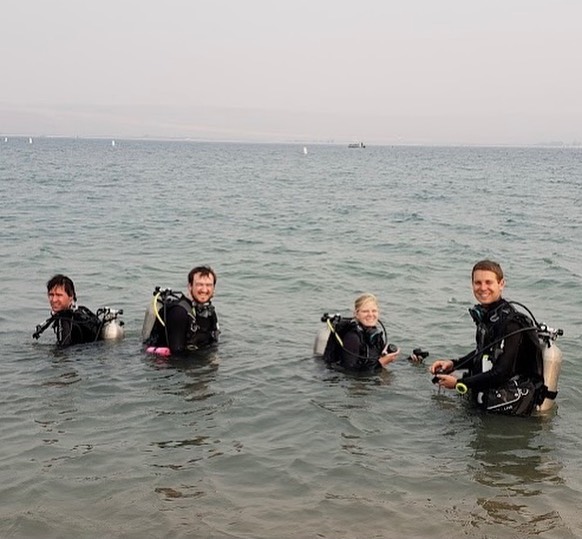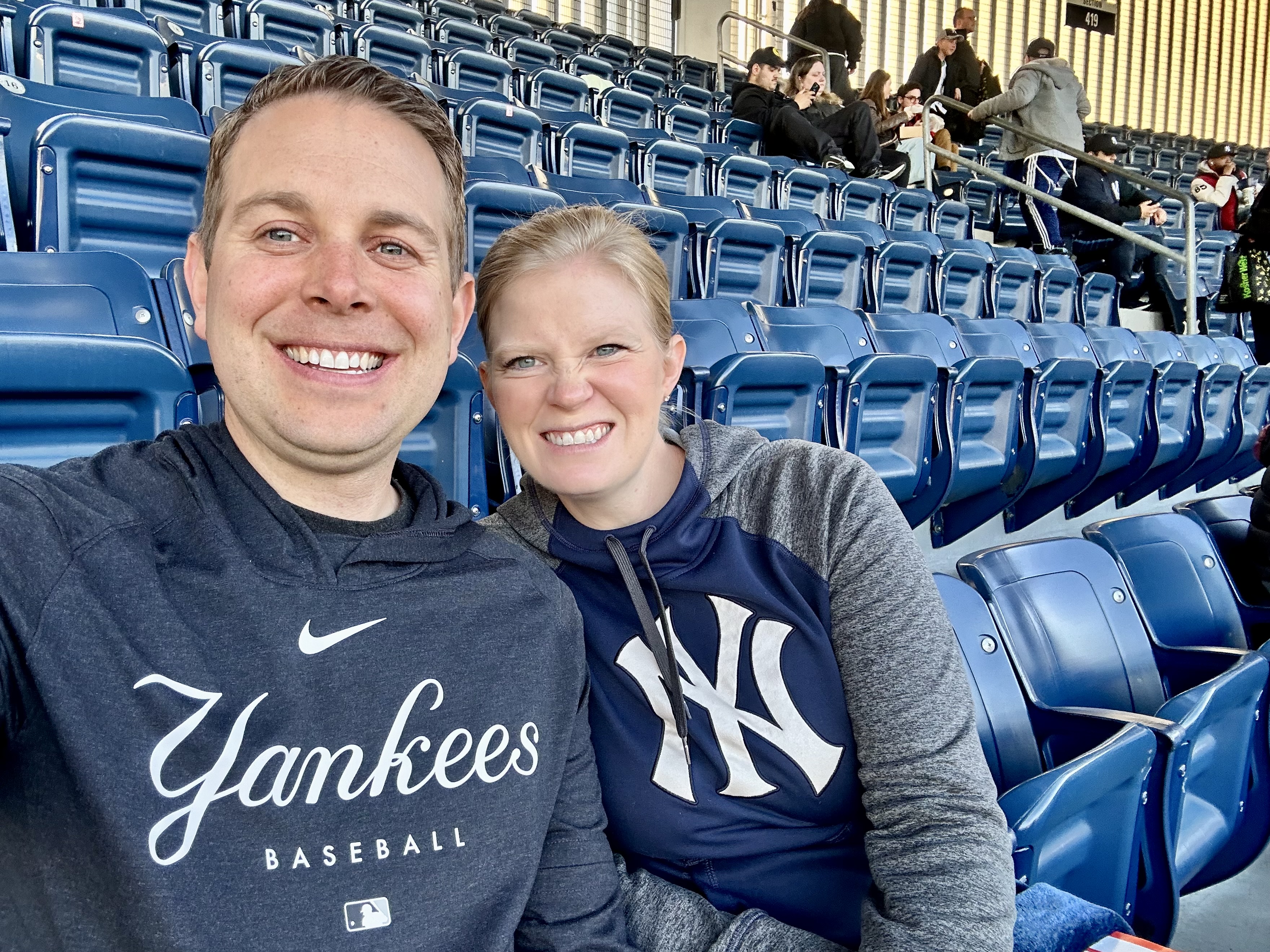Advanced Open Water
When Alison and I were planning the year, I naively thought that by the back half of 2021 we wouldn't really be worried about COVID. Yet here we are. COVID remains a serious concern. Many people are hospitalized as the virus rages. International travel is complicated by changing rules and regulations. As countries take different approaches to mitigating the virus, waves occur at different times. As we watched the Delta (and other) variants spread around the world we decided to postpone the trip we had to visit South America to 2022. This opened up some time on our calendar for a different trip. After doing some research we settled on Belize.
One of the things that drew us to Belize is that Belize is one of the top scuba diving destinations in the world. One of the best known dives sites in Belize is the Blue Hole. The Blue Hole is the world's largest sink hole. It is about 1,000 feet across and 500 feet deep. Because most dives in the Blue Hole go deeper than 60 feet divers need to have an advanced diving certification.
With this trip tentatively planned for November 2021, Alison and I decided to get our advanced open water dive certification. Earlier this year we found The Scuba Dive located in Riverton, Utah. We really like this Dive shop. We decided to go through them to obtain our certification.
They set us up to get certified with SDI (Scuba Diving International). This is one of the main organizations that provides Scuba certifications that are recognized around the world. Before we did any diving we had some course work that we completed online.
In order to get an advanced certification we had to work on select five specialties. Each speciality had course work. We also had a training dive where we focused on each specialty. The specialties we selected were beach diving, navigation, advanced buoyancy, night/low visibility diving, and deep/altitude diving.
We completed our training dives in two separate trips. It is difficult to find a place in Utah where we could complete all five dives on one go.
Our first trip took place on the first weekend in August. We drove down to St. George. It was an extremely smoky weekend because of all the California fires. We hoped the air might be better in St. George, but no such luck. It wasn't quite as bad in St. George, but it was still not good.
We did our dives at Sand Hollow State Park. Sand Hollow has an area set up as a dive park. This way divers don't have to worry about having boats or fishermen overhead. This was the first fresh water/lake location Alison and I have gone scuba diving. We weren't really prepared for how different it would be from our other diving experience. Before we got into the water we had to assemble our gear. We haven't personally assembled our own gear since our initial certification so it took us a second to remember how to put it together. Once our gear was on we did our buddy check and got into the water. For our first dive we were focused on the skill of beach diving. We also hadn't previously gone scuba diving off a beach. This was also a new experience. We actually swam out to the far end of the dive park before we descended. At the far end of the dive park is an old plane, a van and a few other submerged items. The plan was to see those sights and then make our way back to shore under the water.
Best laid plans did not prepare Alison and I for our first poor visibility dive. We submerged and quickly realized we couldn't see a thing. We had maybe a few feet of visibility. It didn't help that we had recently bought our face masks and they kept fogging up, which gave us even worse visibility. We would see our instructor for a couple of kicks and then she would disappear. She kept coming back to find us. Eventually she was able to communicate that we were supposed to be following a thin white string from sight to sight within the dive park. Once we got that figured out and we figured out our masks were foggy and needed to be cleared we did a little better. Still the visibility was horrible. When you dive from the shore you have to carry a buoy to let people know there is a diver under the water. We each took turns carrying it for a few minutes. Once we had visited all of the sights (I vaguely could make out the plane and other vehicles) we had to chart a course and head back to shore. Alison and I didn't quite make it back to our starting point and we had to swim the remaining distance.
Once we were up Alison and I both commented on how unprepared we were for the low visibility. I even asked Alison if she thought our instructor would certify us. We were terrible divers in those conditions. Alison commented that if this was her first diving experience, it might have also been her last. It wasn't much fun to dive in a lake with such poor visibility.
We preserved and we did much better on our second dive. This dive we didn't go particularly deep - max 10 feet or so. Rather it was a series of dives were we demonstrated our under water navigation skills. Alison and I were prepared. We bought a compass and practiced using it to navigate around our yard. In then water we did pretty good. We were better with low visibility and we stayed together, except for the first very first skill where Alison took off and I couldn't find her. We both surfaced and tried it again. For the first skill we each had to find a heading to a buoy off in the distance and then descend and navigate to the buoy. Once you got to the buoy you had to chart a course back (while you were underwater) and end up back where you started. We did well at this skill. The second skill we had to practice was using the compass to create a square while we were under the water. We took turns (we each had to navigate separately, but we stayed with our buddy while they were navigating). Alison went first and killed it. She made a perfect square and I focused on staying with her. I went next and also did great. I charted a square path under water and ended up where I started. We were much more comfortable on this dive.
After our second dives we got to hang around and wait for the sun to go down. Our last dive of the day was going to be a night dive. While we waited we ate food, chatted, and got our gear set up. Night diving requires some extra gear. We had our primary flashlights, back up flash lights, and tank markers (small lights connected to your tank to increase your visibility. After the earlier debacle of our first dive we were a little nervous, but our instructor told us that it might actually be easier to see the rest of the group since we would all have lights. We also borrowed some sea drops for our face masks to help them fog up less.
Once the sun had set we entered the water. This dive was our best dive of the day. While we don't find lake diving to be particularly enjoyable this dive was kind of fun. It was easier to stay together as a group because of everyone's light. There were 6 people in the group and we stayed together for the entire 30ish minutes we were under water. Alison and I are fairly interested in going night diving on one of our future trips after this experience.
We finished diving and got all our gear packed up. Alison and I stayed in St. George overnight before driving home the next day.
We finished up our last two dives the last weekend in August. We did these dives at the Homestead Crater in Midway. We drove up to the crater on Friday night after work. We assembled all of our gear in the parking lot. We were much more efficient this time around and then headed into the crater. The crater is an interesting place to dive. It is a deep geothermal hot spring. There isn't much to see, but it is deep enough that we could meet the requirements for a deep dive.
Our first dive focused on the deep diving skills. To certify for the deep diving skill you have to go below 60 feet. The deepest point of the crater is 65 feet. We went all of the way to the bottom. Diving in the crater is nice because it is warm. The water is around 97 degrees Fahrenheit. At first it seemed a little too warm, but ended up being perfect. Before we dove our instructor timed us all writing the ABCs on our slates. She did this because she would also time us down at the bottom. This was to demonstrate that you brain functions slower at depth. A diver needs to be aware their cognitive abilities will be impaired the deeper you go. She timed us down at the bottom. Alison was pretty close to her surface time, but I was way off. Later when Alison saw my ABCs from the bottom she told me it looked like I was drunk. Which in all fairness I do think I experienced some nitrogen narcosis. This is basically where at depth a diver can have an altered state of consciousness similar to being drunk. I definitely had some weird things going on in my brain at the bottom. I think the low visibility (visibility was much better at the crater than it was at Sand Hollow) and the depth both got to me a bit. It was also dark and narrow at the bottom. It got narrower the deeper we went. At the bottom we were all kind of on top of each other. We also used out flashlights so we could see where we were going. We were at depth for about 20 minutes before we headed back to the surface.
We stayed up top and in the water for a safety interval before our last dive. This dive we didn't go as deep. Our focus was on buoyancy. We went to 20 feet and practiced being bouyant and then we went down to 40 feet and repeated the practice. Then we found an area with a PVC pipe built in a diamond shape and we all took turns going through the obstacle, trying to avoid having it touch any part of our bodies. We all went through multiple times.
We enjoyed the crater quite a bit. While there isn't much to see or do there, it is a good place to practice diving. It was comfortable and we felt great on these dives.
After this final dive we were done with our advanced course. Jen did sign off for us. We are officially advanced open water divers and we are ready for more Scuba Diving adventures. The skills we practiced were helpful. We consider ourselves better divers now than we were before.




Comments
Post a Comment